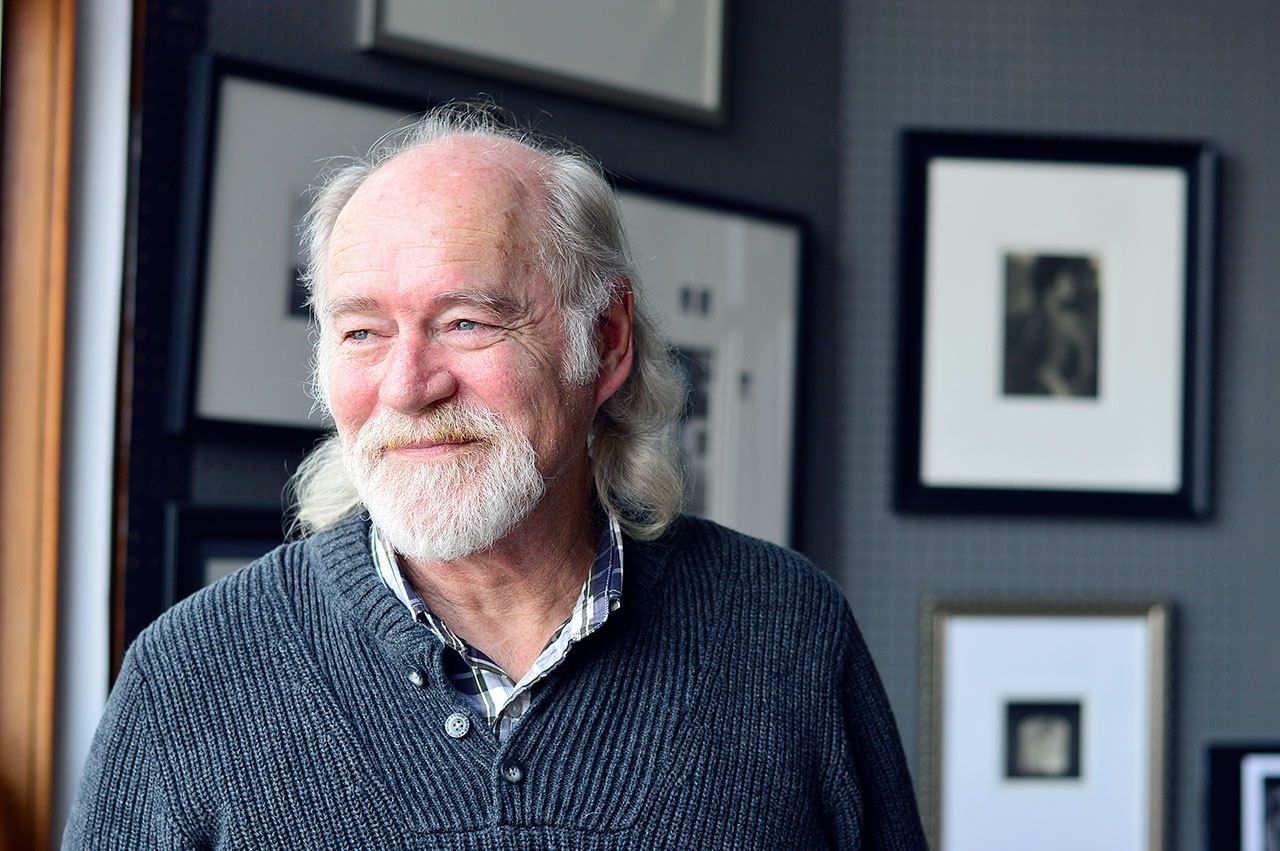By Diane Urbani de la Paz
For Peninsula Daily News
PORT ANGELES — Come to the window and close your eyes. Now look into the lens. Let go of the need to smile.
Such are the guiding words behind an Ernst portrait, the unmistakable photographs Ernst-Ulrich Schafer creates.
Scores of his images, from portraits to cityscapes, will fill Studio Bob in Schafer’s 40-year retrospective, a show that will open with a reception Saturday night and a talk by the artist Sunday.
Admission is free to Studio Bob, 118½ E. Front St., while the adjacent Loom lounge will have food and drink available for purchase.
The opening party will go from 5 p.m. to 8 p.m. Saturday; then Schafer will host a discussion — “it’ll be open-ended,” he promises — during the Sunday showing from noon to 3 p.m.
The exhibition will stay up through November and visitors may make appointments to see it by phoning Schafer at 360-808-6058.
In his sunlight-filled loft studio earlier this week, Schafer said he’ll portray his first 40 years as a photographer by hanging 40 framed prints; a slew of postcard-size images; some of his award-winning photographs; several collages plus pictures from his collection of work by fellow photographers.
He’ll even hang some strips of film negatives, those historic things that started his career.
It was 1971 when Schafer was serving as an Army combat engineer in Vietnam. A friend, eager to switch to the latest gear, gave him an old camera.
Before that object landed in his hands, Schafer was a 19-year-old with no direction in life. He thought: “Wouldn’t it be great to be a photographer?”
Schafer served four years in the Army, mustered out at Fort Lewis (now Joint Base Lewis-McChord) and went to Clark College in Vancouver, Wash., on G.I. Bill benefits.
He studied photography and found inspiration in the work of other artists; by the late 1970s he had begun documenting Memorial Day and Veterans Day services, something he does to this day.
In Vancouver, Schafer married, and he and his wife Donna Matyskiela had a little boy, Dylan, named after Bob Dylan. They decided to move to a smaller town to raise their son, and Schafer later found work in the photo department at Frick Drugs in Sequim.
“I was just doing my own projects,” Schafer said of that time.
One such endeavor found him at the Clallam County Fair, making portraits of youngsters and their animals.
Nobody else was doing this. One fair day in 2002, he sold 450 5-by-7 prints off a picnic table.
So developed his profession as a portraitist, and his progression toward opening his own studio.
Ernst Fine Art Photography started out on Laurel Street in 2000, then moved to the upstairs space next to Studio Bob at the beginning of this year.
“I love window light,” he said as a reporter asked him to step toward it. Then Schafer, 64, spoke of his love for a lot of other things: taking workshops with other photographers around the country, roaming around taking photos in cities large and small, capturing the tender gaze between a husband and wife.
“I like being positive. I like good energy.
“Portrait work is so exciting. We’re all different. We all bring something special,” Schafer said, adding that another of his favorite projects is what he calls “Yank ’em off the Sidewalk.”
He walks up to an individual downtown and asks to take his or her portrait. Schafer has won awards for these at photography conferences, and might display a few in this weekend’s show.
Does anyone ever say to him, “Oh no, I don’t look good in pictures”?
“Every person,” said Schafer. It’s usually because in the past somebody commanded this person to smile for the camera, say cheese, smile, come on, smile.
Many of Schafer’s best images, he feels, are those of people being themselves, not necessarily smiling.
About five years ago Schafer took a workshop with Darton Drake, a photographer out of Chicago.
“He turned my world upside down, with his composition, his lighting,” Schafer said.
Drake is now deceased, yet his images still rock Schafer’s world, and that is a good thing.
Schafer seeks and finds renewal all around, in other artists, in children and elders, in the moon and sky.
And he acknowledges that in this world of cellphone cameras, it’s not easy to make a living as a photographer. But Schafer doesn’t dwell on that. He’s about making a life as an artist.
To answer the question posed some four decades ago: Yes, it is great to be a photographer.
________
Diane Urbani de la Paz, a former features editor for the Peninsula Daily News, is a freelance writer living in Port Angeles.

